Our coverage of the SpaceX Crew Dragon landing has ended. Please check CNN Business for more news.
SpaceX Crew Dragon astronauts return to Earth
Jackie Wattles, CNN Business
SpaceX coverage has concluded
Astronauts emerge
From CNN Business' Jackie Wattles
After a brief hangup caused by wayward fumes given off by propellant, the Crew Dragon opened its hatch and Behnken and Hurley took their first steps into Earth's gravity after spending two months in the zero-G environment of space.
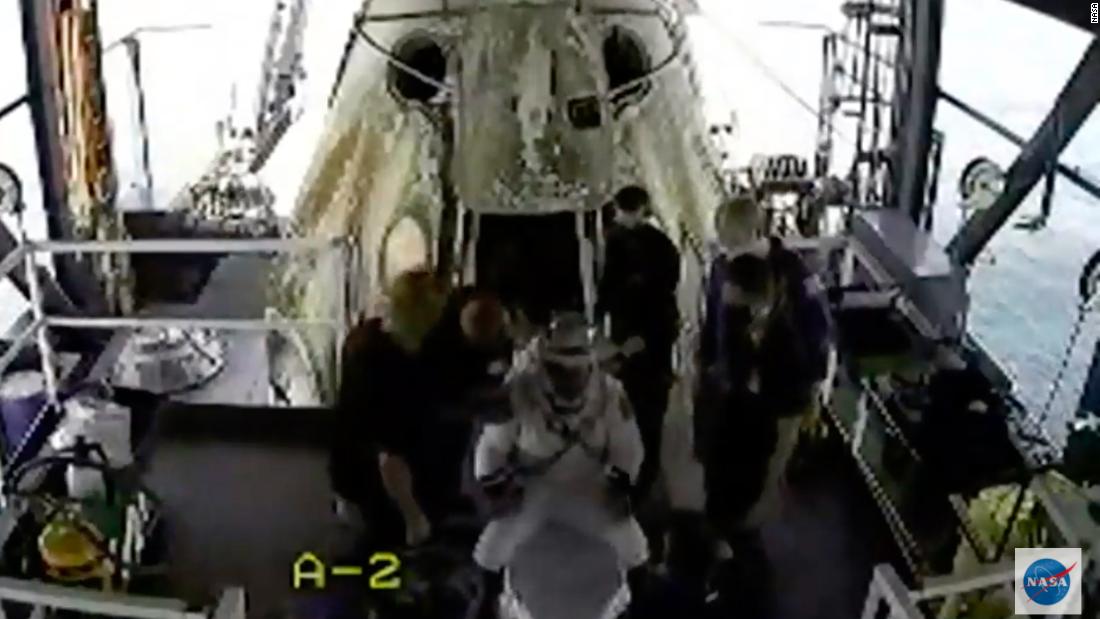
Behnken waved to the cameras before heading to his medical check up. Hurley followed shortly after and flashed a thumb's up.
The astronauts are now on board SpaceX's GO Navigator recovery vessel and will soon take a helicopter flight back to terra firma.
"Thanks for doing the most difficult part and the most important part," Hurley said to mission control shortly before departing.
Spending two months in microgravity, then enduring a jarring trip home, can make readjusting difficult.
NASA astronaut Garret Reisman, who helped SpaceX develop Crew Dragon, said it took him about 15 minutes to sit up and another 15 to be able to stand after he returned to Earth after Space Shuttle missions.
Fumes coming from Crew Dragon delay astronaut departure
From CNN Business' Jackie Wattles
The Crew Dragon recovery team has detected small amounts of NTO, or nitrogen tetroxide, a potentially toxic propellant used in the capsule's onboard rocket engines.

The levels aren't high enough to be dangerous to humans, according to SpaceX and NASA officials. And the air inside the spacecraft is clean.
But the safety teams want to put the issue to bed before the astronauts are allowed to disembark.
The 'Dragon's nest' approaches
From CNN Business' Jackie Wattles
The recovery ship GO Navigator has closed in on the Crew Dragon spacecraft, with astronauts Doug Hurley and Robert Behnken still strapped inside.
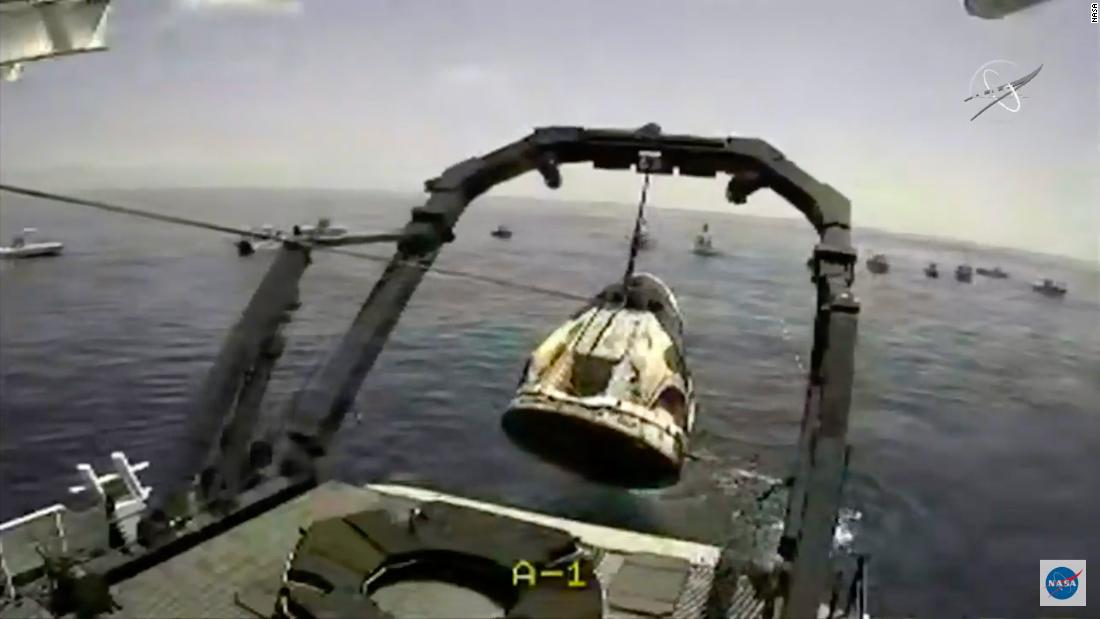
At the ship's rear is a large rig that has plucked the spacecraft out of the ocean and nestled it in an onboard dock, nicknamed the Dragon's nest.
Soon after it's on board, Behnken and Hurley will disembark and take their first steps back onto their home planet.
Ships to the rescue
From CNN Business' Jackie Wattles
Two small boats swooped in immediately after splashdown. One is checking to make sure there are no toxic fumes around the Crew Dragon capsule. The other is working to drag the spacecraft's parachutes out of the ocean.
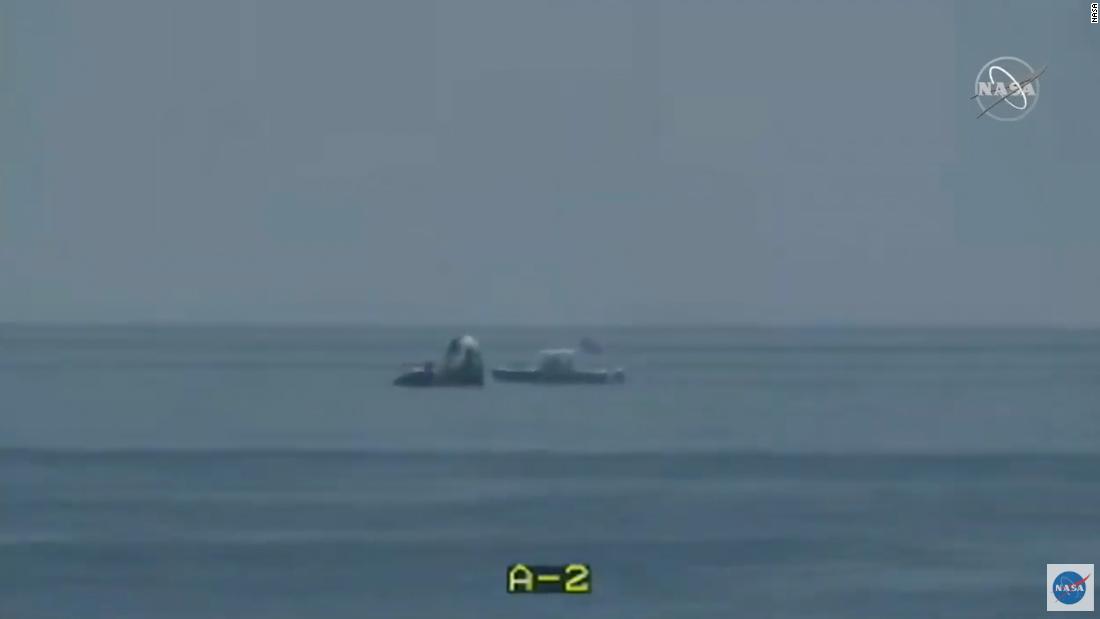
Waiting in the wings is GO Navigator, a much larger vessel with a rig that can haul the Crew Dragon spacecraft itself out of the ocean.
Hurley and Behnken will disembark after their vehicle is safely on board. That's expected to happen in less than an hour.
Mission control to astronauts: 'Thank you for flying SpaceX'
From CNN Business' Jackie Wattles
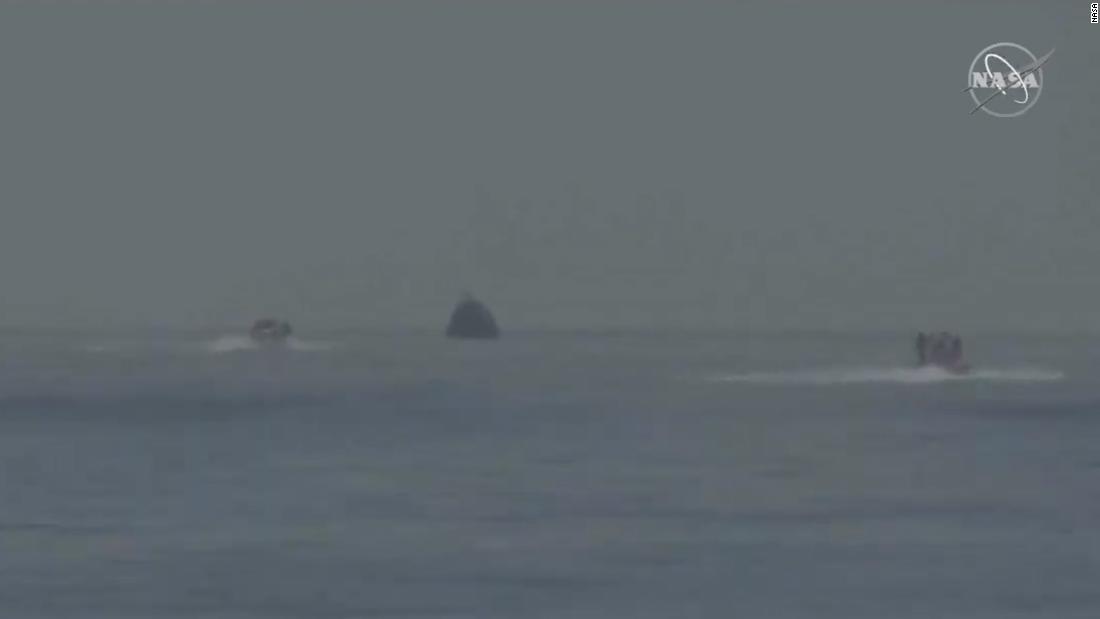
The first words from mission control to the astronauts were a humorous welcome home: "Thank you for flying SpaceX."
The astronauts had a cheerful message for their flight doctors waiting to check them out as well:
"Let them know we're feeling good."
SPLASHDOWN!
From CNN Business' Jackie Wattles
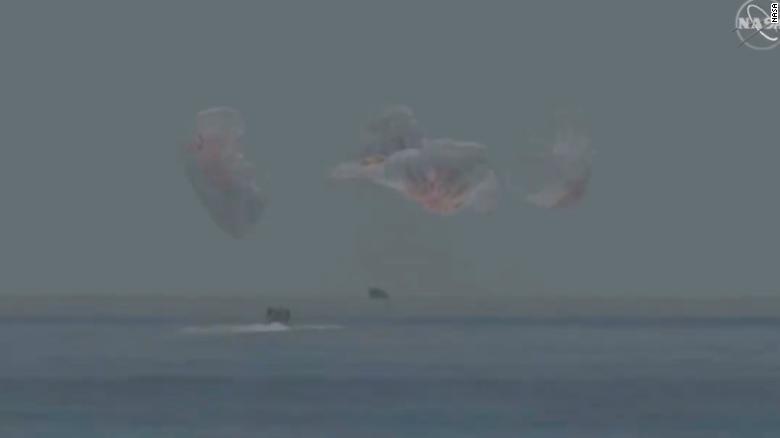
The Crew Dragon capsule has splashed down into the Gulf of Mexico, finishing off the hardest part of today's journey.
And SpaceX personnel cheered loudly from inside mission control at SpaceX's Hawthorne, California headquarters. The GO Navigator rescue ship will move in to haul the Crew Dragon spacecraft out of the water and allow Behnken and Hurley to disembark.
Main parachutes fan out
From CNN Business' Jackie Wattles

The first set of parachutes, called "drogue parachutes," just stretched up above the Crew Dragon spacecraft. In about a minute, a second plume of four main parachutes — which are much larger — will fan out to continue slowing Hurley and Behnken's descent.
They were followed quickly by the Crew Dragon's four main parachutes. Behnken and Hurley are rapidly approaching their splashdown site. The parachutes will aim to slow the spacecraft down to 15 or 16 miles per hour before hitting the ocean.
Communications blackout (don't panic!)
From CNN Business' Jackie Wattles
As expected, mission control has lost communications contact with the Crew Dragon capsule. This is common for spacecraft going through the extreme conditions of reentry, when the dramatic heat and buildup of plasma briefly interfere with radio waves used for communication.
The blackout is expected to last six minutes.